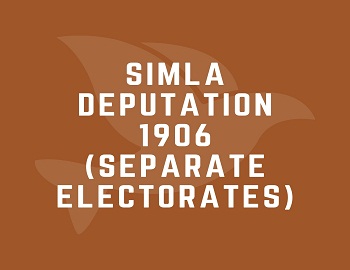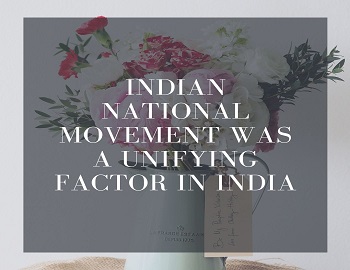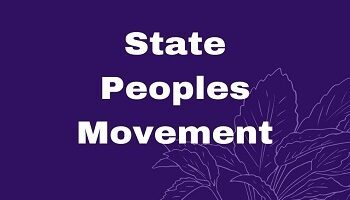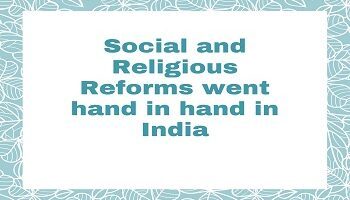Table of Contents
Mauryan Empire Important Facts:
Chandragupta Maurya (321-297 B.C.):
- Called as Sandrocottus by the Greeks.
- Finding signs of royalty in him, Chanakya or Vishnu Gupta or Kautilya, brought him up got him educated at Taxila.
- At the young age of 25, dethroned the last Nanda ruler (Dhanananda) & occupied Pataliputra in 321 B.C. with the help of Kautilya.
- Fought Seleukos Nicator in 305 B.C., who was Alexander’s General in central Asiatic provinces & thus gained Paropanisadai (kabul), Aria (Herat), Arachosia (Gandhara) & Gedrosia (Baluchistan) & received Megasthenes as Seleukos ambassador to the Mauryan Court.
- He embraced Jainism toward the end of his life.
- Accompanied by Bhadrabahu & several other Jaina monks, he is said to have gone to Shravana Belagola near Mysore, where he deliberately starved himself to death in the approved Jaina fashion (sallekhana).
Bindusara (297 – 272 B.C):
- Called as Amitrochates (derived from the Sanskrit word Amitraghata ‘slayer of foes’ & Amitrakhada ‘Devourer of foes’) by the Greeks.
- He is said to have conquered the land between two seas, presumably the Arabian Sea & the Bay of Bengal.
- Bindusara appointed his eldest son Sumana (also named Susima) as his Viceroy at Taxila & Asoka at Ujjain. The Divyavadana tells the story of a revolt in Taxila. When it went out of control for Sumana, Bindusara deputed Asoka to restore order.
- Bindusara had contacts with Antiochus I, the Seleucid king of Syria whose Ambassador, Deimachus, was said to have been at the Mauryan court, Bindusrara wrote to Antiochus I asking for some sweet wine, dried figs & a sophist to be sent to the Mauryan Court. The latter sent all but the sophist, explaining that Greek law would not permit a sophist to be sent.
- He embraced the Ajivika (fortuneteller or pre-determinism) sect.
Asoka:
- It was only in 1837 when James C.Princep deciphered a ‘Brahmi‘ inscription that Asoka came to light & became most popular ruler of Ancient Indian history.
- The name Asoka (Sorrow free) occurs only once in the Maski edict. [Maski edict – Buddhashakya & Ashok; Sarnath Inscription – Dharmasoka].
- Puranas referred to as Asokavardhana.
- Girnar inscription of Rudradaman (A.D. 150) mentioned him as Asoka the maurya.
- Calcutta-Bhabru inscription – Asoka refers to himself as Piyadasi Raja magadhe i.e Piyadasi, the king of magadhe.
- In his edicts, Asoka assumed two titles – Devanampiya (beloved of the Gods) & Piyadassi (of pleasing appearance).
- Accoding to Buddhist sources, Asoka was the son of Subhadrangi & his most well-known queens are Karuvaki & Asandhimitra. His only son mentioned in the inscription was Tivara.
- 261-260 B.C.– fought the Kalinga war (mentioned in 13th Rock edict) after which he renounced warfare.
- Asoka converted to Buddhism by Nigrodha/Upagupta, a boy monk of 7 year.
- 21st year of his reign, he visited Lumbini, the birth place of Buddha & fixed the land revenue at a concessional 1/8th of the produce.
- He organised the third Buddhist Council (250 B.C.) at Pataliputra presided by Moggaliputta Tissa.
- Sent his son Mahindra & daughter Sanghamitra to Srilanka for the propagation of Buddhism.
- The last Mauryan ruler was Brihadratha who, according to the testimony of Banabhatta (Harsha-charita), was murdered by his general Pushyamitra Sunga.
Asoka’s Dhamma:
Some of the principles put forth for the state were:
- to promote peace & harmony in the state.
- to ensure fast & effective justice to people.
- to build road, rest houses & wells for travellers.
- to set up nurseries to grow medicinal herbs for the use of the common man.
- to establish wildlife sanctuaries for the preservation of animals & plants.
- to promote education among the population at large.
Some of the principles advocated for individuals were:
- to live together in peace & harmony.
- to speak the truth.
- to respect all religions.
- to follow the path of ahimsa or non-violence towards humans & animals.
- to be kind to the poor, including servants & slaves.
- to respect & obey elders.
Measures for propagation:
- Appointment of Dhamma-mahamatras.
- Dhamma-yatras, royal tours for the propagation of Dhamma.
- Dhamma-mangala, public welfare activities in accordance with the spirit of Dhamma.
- Issue of Dhamma Lipis & Dhamma stambhas respectively in the form of Rock & pillar edicts.
- Administrative measures suited to the principles of Dhamma.
The concept of non-violence & other similar ideas of Asoka’s Dhamma are identical with the teachings of Buddha. But he did not equate Dhamma with Buddhist teachings. Buddhism remained his personal belief. His Dhamma signifies a general code of conduct. Asoka wished that his Dhamma should spread through all social levels.
Mauryan Empire- Administration:
- It was centralized in character.
- Kings were described as Devanampriya, Beloved of the Gods. The king was the source & center of all authority, head of administration, law & justice & also the supreme judge.
- Kautilya has said, “administration cannot be the work of one man, just as one wheel cannot drive a vehicle”.
- Therefore, a council of ministers called Mantriparishad assisted the king in administrative matters. It consists of Purohita (high priest); Mahamantri; Senapati (commander-in-chief) & Yuvaraja (heir-apparent).
- There were civil servants called Amatyas to look after the day-to-day administration.
- Asoka appointed Dhamma Mahamatras to supervise the spread of Dhamma.
- The chief source of income was land revenue, which varied from 1/6th to 1/4th of the produce. Those using irrigation had to pay additional for it. Bhaga was the land revenue. Bhoga was the ceremonial gifts received from peasants. Bali was levied on land measured in the assessment. There was additional tax Pindkara collected lum sum at the village level. Taxes were paid both in cash & kind. The Samharta was the chief of the revenue department & the Sannidhata was the chief tax custodian.
- The Mauryan army was under the control of Senapati. The salaries were paid in cash.
- According to Greek author Pliny, the Mauryan army consisted of six lakh infantry, thirty thousand cavalry, nine thousand elephants & eight thousand chariots.
- Sansthan (stationary) & Sanchari (wandering) looked after intelligence & espionage. Prativedakas were special reporters of the king.
- The judiciary had two sets of courts – Dharmasthiya dealt with civil matters & Kantakashodhara dealt with criminal offences & treachery.
- The Mauryan Empire was divided into four provinces. The northern province, called Uttarapatha, had Taxila as its capital; the western province, known as Avantipatha, had its capital in Ujjain; Prachyapatha with its capital Toshali (Kalinga) formed the eastern province while Dakshinapatha with its capital Suvarnagiri was the southernmost province.
- Provinces were divided into districts & had three main officers- Pradeshika (overall administration), Rajukas (Judicial officers) & Yuktas (Accountant/Clerk).
- The head of a village was called gramika. Above the gramika was a gopa who was the head of ten villages & the sthanika who controlled a janapada or a district comprising one hundred villages.
- Municipal Administration – Arthashastra contains a full chapter on the role of Nagarika or city superintendent. His chief duty was to maintain law & order. Megasthenes refers to the six committees of five members each to look after the administration of Pataliputra. These committees looked after – Industries; Foreigners; Registration of birth & deaths; Trade; Manufacture & sale of goods; Collection of sales tax.
Mauryan Empire- Art & Architecture:
- The pillars are made of two types of stone – the spotted red & white sandstone from the region of Mathura ; the buff coloured fine-grained hard sandstone usually with small black spots quarried in chunar near Banaras.
- The Sarnath pillar with four lions standing back to back is the most magnificent. The Indian government adopted this capital with some modifications as its state emblem.
- Asoka is credited with building 84,000 stupas all over India & Afghanistan.
- The best example is the famous Sanchi stupa (near Bhopal)with massive dimensions.
- Lauriyanandangarh – Single Lion.
- Rampurwa – Bull Capital.
- Sankisa – Elephant.
- Statue of Yakshini – Didarganj.
- Most important heritage of the Mauryas were the caves- Barabar hills near Gaya & Nagarjuni hills in Bihar. Earliest known examples of the rock-cut architecture.
- Asoka & his grandson dedicated these caves to Ajivika sect.
- Pottery was abundant- most popular was the Northern Black Polished Ware (NBPW).
- Terracotta consist of Primitive idols, toys, beads & ornaments.
Other Important Points For Mauryan Empire:
- Asokan inscription are written in two scripts– Kharosthi & Brahmi. Inscription found at Shahbazgarhi & Mansehra are written in Kharosthi script (written from right to left) & the remaining found in Brahmi Script (written from left to right).
- Arthasastra written by Kautilya (also called Indian Machiavelli). It was discovered by R.Shamasastry in 1904. It reflect to a great extent the state of society & economy in the age of Mauryas.
- Mudrarakshasa of Visakhadatta, sanskrit drama of 4th century A.D., describe overthrow of Nandas by Kautilya.
- Chaitya – Place of Worship ; Vihara – dwelling place of the monks.
- Coins in circulation during Mauryan period were Punch-marked Coins.
- Silver – pana ; Copper – mashaka. Copper mashaka 1/16th in value of the silver pana.
- Megasthenes recorded his impression of Mauryan India in the work Indika. He states that Indian society was divided into seven classes – philosophers, farmers, soldiers, herdsmen, artisans, magistrates & councillors.
- Women were employed as personal body-guards of the king









Comments (No)